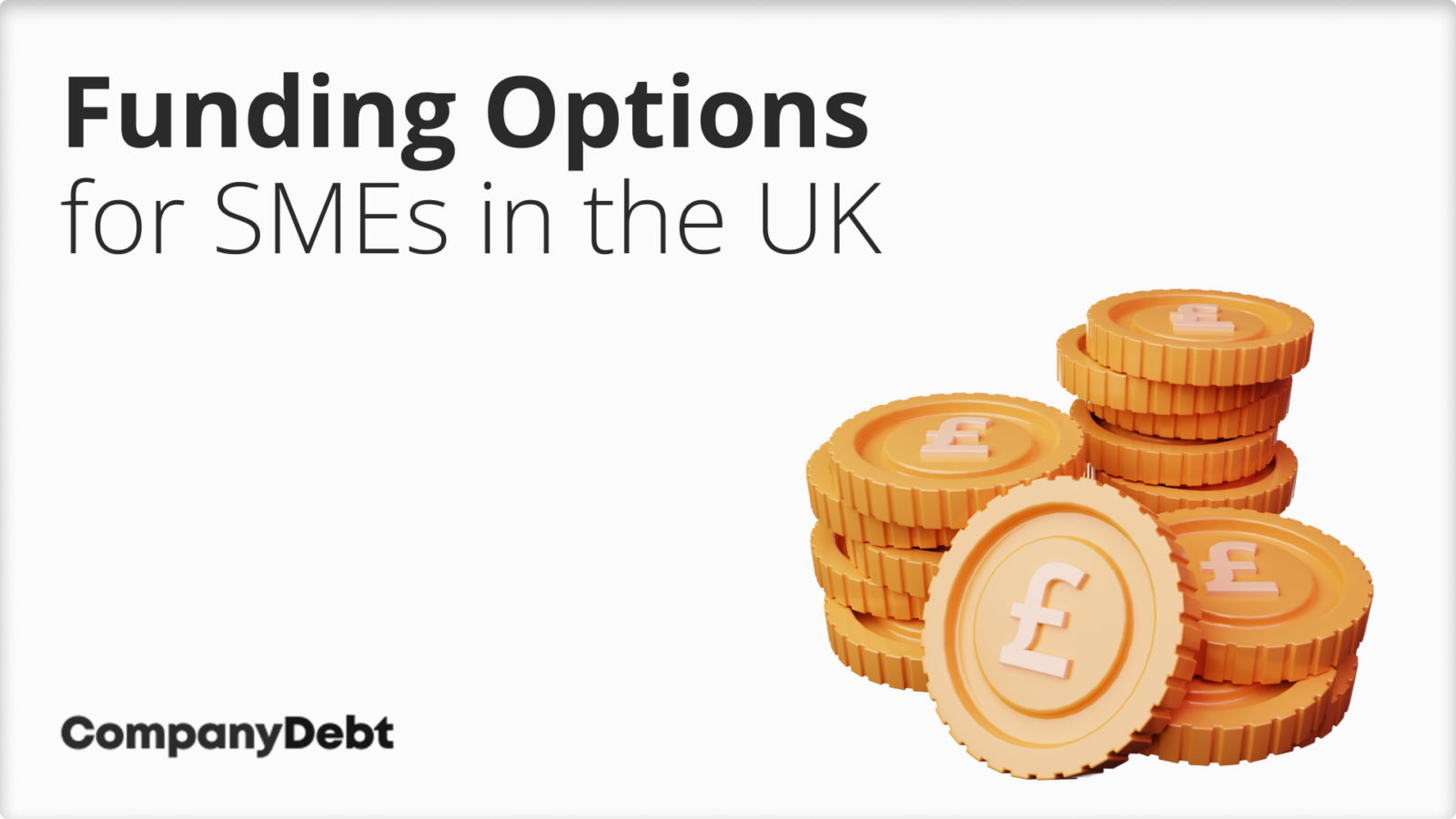
Funding Options for SMEs in the UK
Recent UK business lending statistics reveal a challenging landscape for SMEs seeking finance. The overall success rate for loan applications stands at 50%, but this figure masks significant variations. For instance, while 88% of applications from businesses with 50-249 employees are successful, only 40% of those from businesses with no employees get approved.
Traditional bank loans are becoming harder to secure, especially for smaller businesses and first-time borrowers. In fact, first-time applicants face a success rate of just 37%, compared to 73% for those who have borrowed before[1]Trusted Source – BVA BDRC – SME Finance Monitor, Q4 2023 Report.
Despite these challenges, many companies still need capital to grow and develop. With an array of ‘alternative lenders’ emerging, it can be overwhelming for SMEs to navigate their options. This raises important questions: Where should you start? Who should you approach? And what can you do if you lack sufficient assets or aren’t yet profitable?

Government Grants
Are you looking for financial support that doesn’t require repayment? Government grants might be the answer for your SME. These grants are particularly attractive if your business operates in sectors like innovation, technology, energy, or training – areas that align with the government’s strategic interests.
However, securing a government grant isn’t a walk in the park. Here’s what you need to know:
- Competition is fierce, with many businesses vying for limited funds.
- Grants often target specific business themes and have strict eligibility criteria.
- You’ll likely need to provide detailed business plans and projections.
- Funding is usually earmarked for specific purposes, not general business use.
Read about the latest government grants here: Find government grants
Venture Capital Funding
Is your startup or young company poised for rapid growth? Venture capital (VC) funding might be the boost you need. Unlike traditional loans, VC investors offer capital in exchange for equity in your business.
This funding option could be ideal if you have an innovative product or service with significant market potential, even if you’re not yet profitable. Beyond just money, VC investment often brings valuable industry expertise, mentorship opportunities, and access to extensive business networks.
However, it’s crucial to weigh the implications carefully. You’ll likely need to relinquish some control, as investors may want a say in your company’s decisions and direction. The process can be lengthy and demanding, requiring a compelling business case that demonstrates:
- A solid business model
- A strong management team
- A clear path to significant returns
Working Capital Loan
Are you struggling to manage your day-to-day operations due to cash flow issues? A working capital loan might be the solution you’re looking for. This type of financing is designed to cover your short-term operational needs, not long-term investments.
Here’s what you need to know about working capital loans:
- They’re used for immediate expenses like payroll, inventory, or accounts payable
- They’re particularly useful for businesses with cyclical sales or rapid growth
- They provide the liquidity needed to keep your operations running smoothly
- They can be a lifeline during periods of restricted cash flow
However, before you apply, consider these factors carefully:
Repayment terms and interest rates can vary widely depending on the lender and your business’s creditworthiness. As these loans are typically short-term, they may come with higher interest rates than long-term options. It’s crucial to ensure that the increased cash flow will generate enough income to cover the cost of borrowing.
Invoice Finance
For many SMEs, waiting for customers to pay their invoices can create significant cash flow challenges. Invoice finance offers a solution, allowing you to borrow money against the amounts your customers owe. This clever funding mechanism can improve your cash flow and enable you to reinvest in your business sooner.
Two main types of invoice finance are available:
- Factoring: You sell your invoices to a finance provider who manages the sales ledger and collects payment.
- Invoice discounting: You retain control of your sales ledger and chase payments yourself, using the invoices as collateral for a borrowing facility.
Both options typically give you access to 70% to 90% of your invoice value immediately. This can be a game-changer if you’re dealing with long payment terms or frequent delays.
However, it’s important to weigh the costs against the benefits. Invoice finance usually involves a service charge and interest on the advanced money. Consider these carefully alongside the advantages of improved cash flow.
Asset Finance
Investing in new equipment or machinery is often crucial for business growth, but the upfront costs can be daunting. Asset finance offers a solution that allows you to purchase or lease vital assets without paying the full amount immediately.
This versatile funding option comes in several forms:
- Hire purchase agreements
- Finance leases
- Operating leases
Each type is designed to suit different business needs and tax considerations, giving you flexibility in your approach.
The primary benefit of asset finance is the ability to spread the cost of an asset over its useful life. This approach can significantly ease your cash flow and budgeting challenges. Moreover, as the finance is secured against the asset itself, you may find the borrowing rates more favourable than unsecured loans.
Crowdfunding
Crowdfunding allows you to raise capital by collecting small amounts from a large number of individuals, typically through online platforms.
Crowdfunding offers several advantages:
- It’s particularly effective for businesses with compelling stories or innovative products
- It provides both capital and marketing exposure
- It offers various models, including reward-based, equity-based, and debt-based options
For SMEs with products or services that resonate with the public, crowdfunding can be a powerful tool. It not only helps you secure funds but also builds a community of supporters around your brand.
However, crowdfunding isn’t without its challenges. You’ll need a compelling pitch and often a substantial marketing effort to reach potential funders. Success isn’t guaranteed, and many campaigns fail to reach their funding targets. For equity-based crowdfunding, you’ll need to consider the implications of ownership dilution and changes in shareholder structure.
Peer-to-Peer Lending
Peer-to-peer (P2P) lending offers a fresh approach to business finance, bypassing traditional banks and connecting you directly with individual lenders. This innovative model has gained popularity due to its streamlined application process and often competitive interest rates.
For many SMEs, P2P lending provides a more accessible route to finance, especially if you’ve struggled to meet conventional bank lending criteria. The process typically involves presenting your business case on a P2P platform, allowing interested lenders to contribute towards your loan.
Key benefits of P2P lending include:
- Simplified application processes
- Potentially more competitive interest rates
- Greater accessibility for businesses with non-standard profiles
However, it’s crucial to approach P2P lending with a clear understanding of the risks and responsibilities involved. While P2P platforms conduct due diligence, individual lenders bear the primary risk. As a borrower, you must maintain transparency about your business’s financial health.
The primary sources for this article are listed below, including the relevant laws and Acts which provide their legal basis.
You can learn more about our standards for producing accurate, unbiased content in our editorial policy here.
- Trusted Source – BVA BDRC – SME Finance Monitor, Q4 2023 Report








